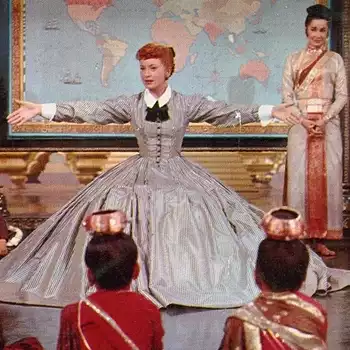
I want to learn everything I can about Princeton. Moving to a terrific community and starting a great new job is incredibly energizing. If you have had this kind of experience, you know what I mean. You feel like your capacity to consume information has increased exponentially, as though your limbic system has tapped into a fountain of youth, and you want to drink deeply from the well. While there is an abundance of well organized publicly available information about Princeton, my goal in this post is to share some of the information that is available specifically to Princeton Public Library cardholders through the subscription databases accessible through the library.
The library’s newspaper collection seems like a good place to start. Checking the “New York Times” Historical Archives (in-library use only), which covers 1851-2012, I searched for articles about the Princeton Public Library and found an article from December 6, 1966, about the “ultra-modern” library that replaced Bainbridge House, “Princeton Youths Help Open Million-Dollar Library.” Here is my favorite sentence: “The dedication was scheduled for 4 P.M., but by that time, several hundred youngsters and a number of adults were pressing against the glass doors.” The more things change! You can also search the index to “Princeton Packet” and “Town Topics” articles published since 1932; a search for the subject term, “Library Expansion Princeton Public Library” returns 1,151 articles between both papers.
Turning to more academic work, JSTOR (in-library use only) offers full-text articles from scholarly journals, many from the first issue, with coverage generally ending 3–5 years ago. A search for “Princeton” returned a comprehensive and relevant article by Valerie Smith from the Fall/Winter 2007 issue of “The Journal of Presbyterian History” entitled, “Princeton and the Struggle for Civil Rights.” The abstract from the article summarizes its story: “During the late 1940s, Princeton desegregated its schools, and in subsequent decades, it grappled with the issues of open housing. The ambiguous legacy of these efforts suggests that the community and its churches have embodied the paradoxes around race and injustice that have characterized the nation as a whole.”
The Biography Reference Center is another place to learn about our history, one person at a time. The database includes full-text biographies of almost 450,000 people, and among them are three living writers who were born in Princeton: John Katzenbach, Ann M. Martin, and John McPhee. How about that for a book club theme? While discussing their books, you may want to listen to a recording by Princeton-born singer, Mary Chapin Carpenter, in the background.
Of course, these are just small tastes of the articles and data you have access to at the Princeton Public Library; I could, and hope to, write another post focused solely on the voluminous Reference USA, which specializes in businesses, residences, and consumers. In the meantime, I encourage anyone with an in-depth research question to make use of our Librarian-by-Appointment service for uninterrupted, personalized reference assistance.
We think the library is a great place to learn about anything that interests you, including yourself and your community. And if you do make use of these resources then, channeling Rodgers and Hammerstein (I recommend watching “The King and I” or listening to its soundtrack), we think you’ll notice that suddenly you’re bright and breezy.
Image derived from a 1956 advertisement for “The King and I”
